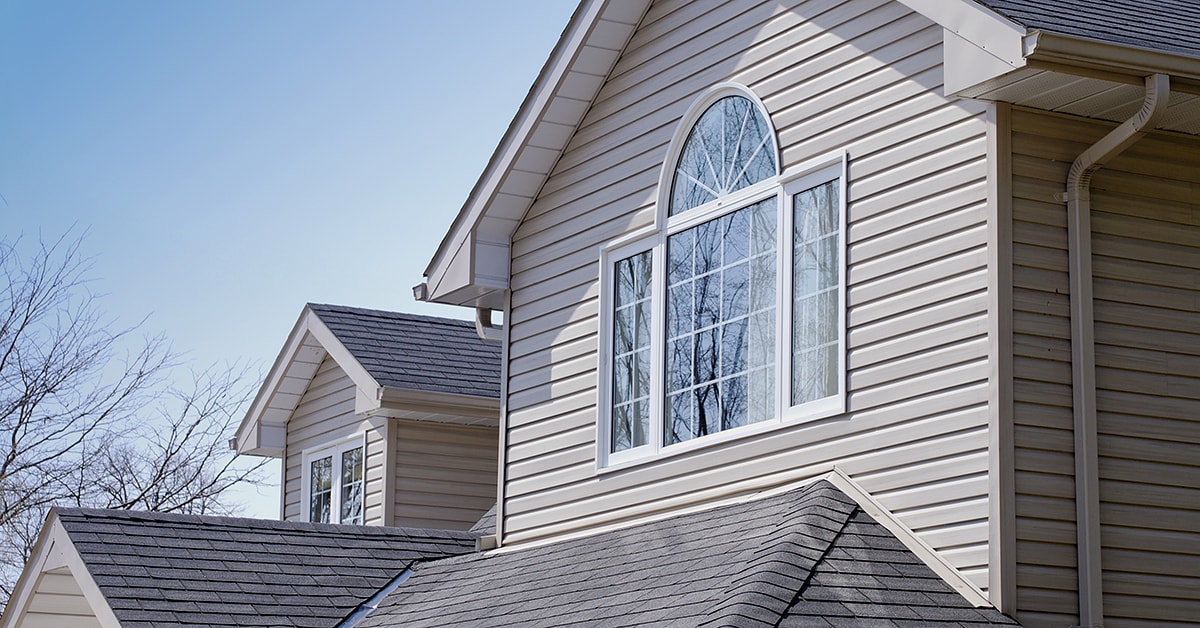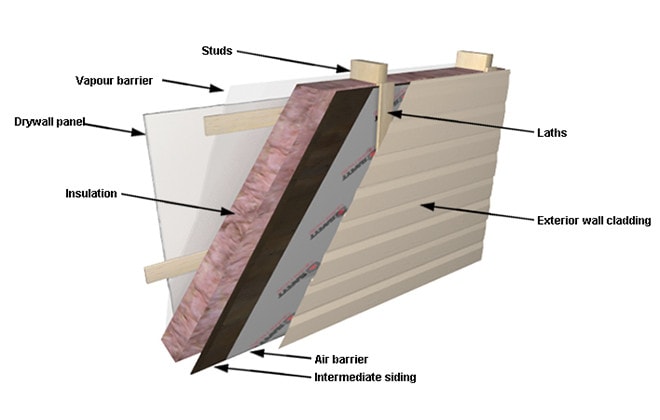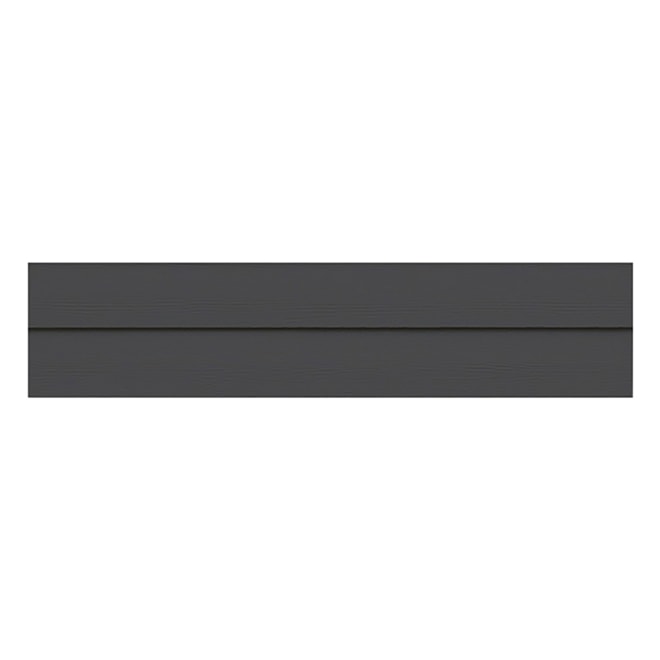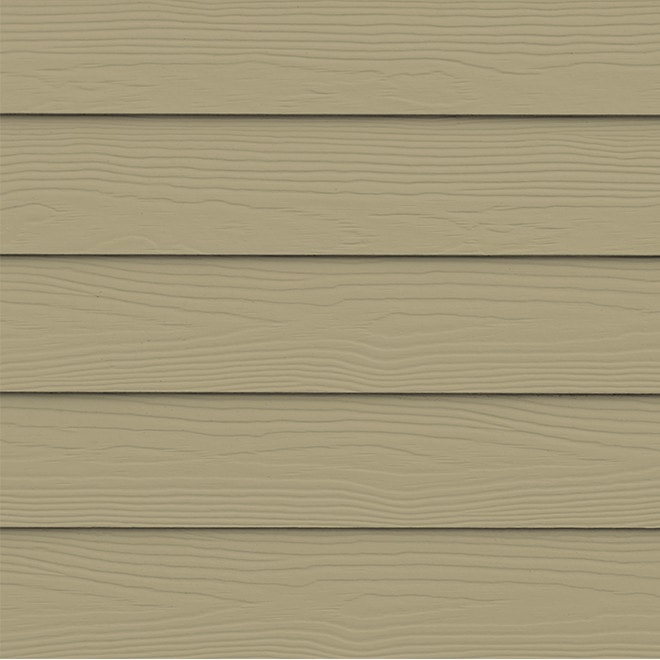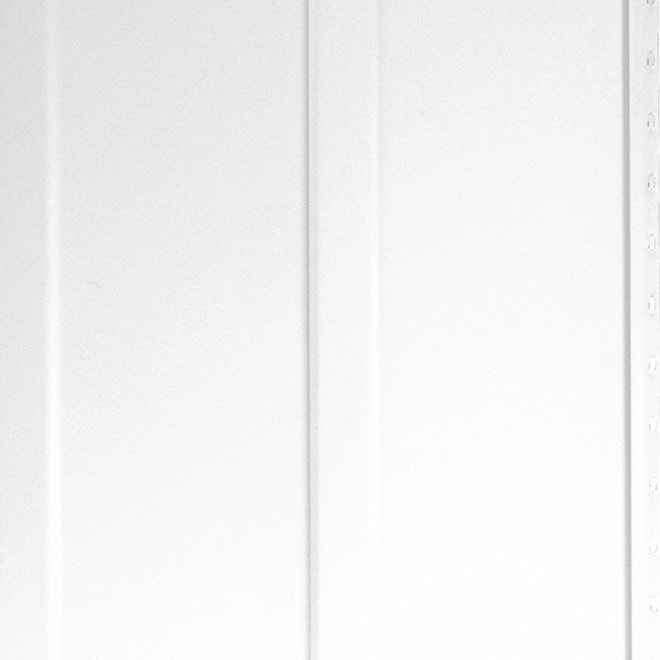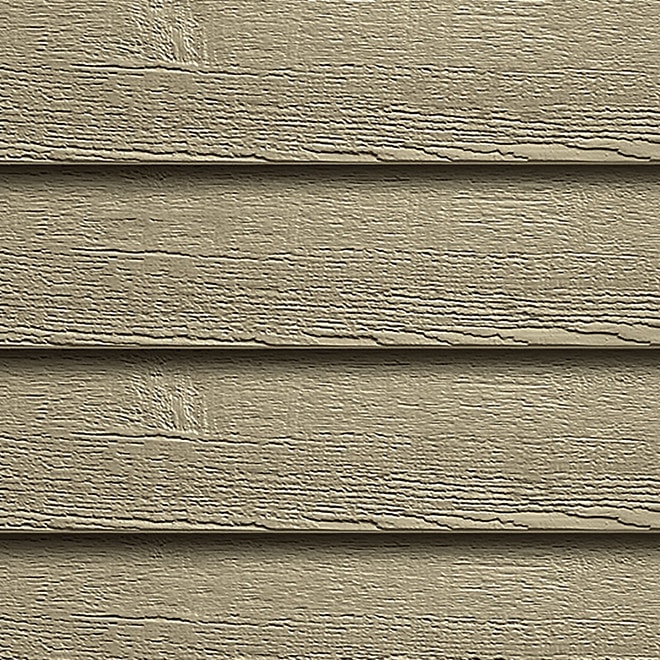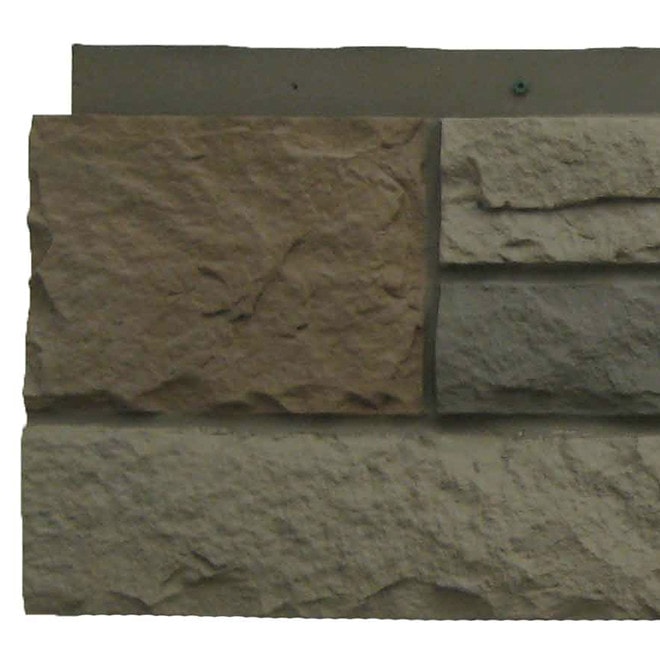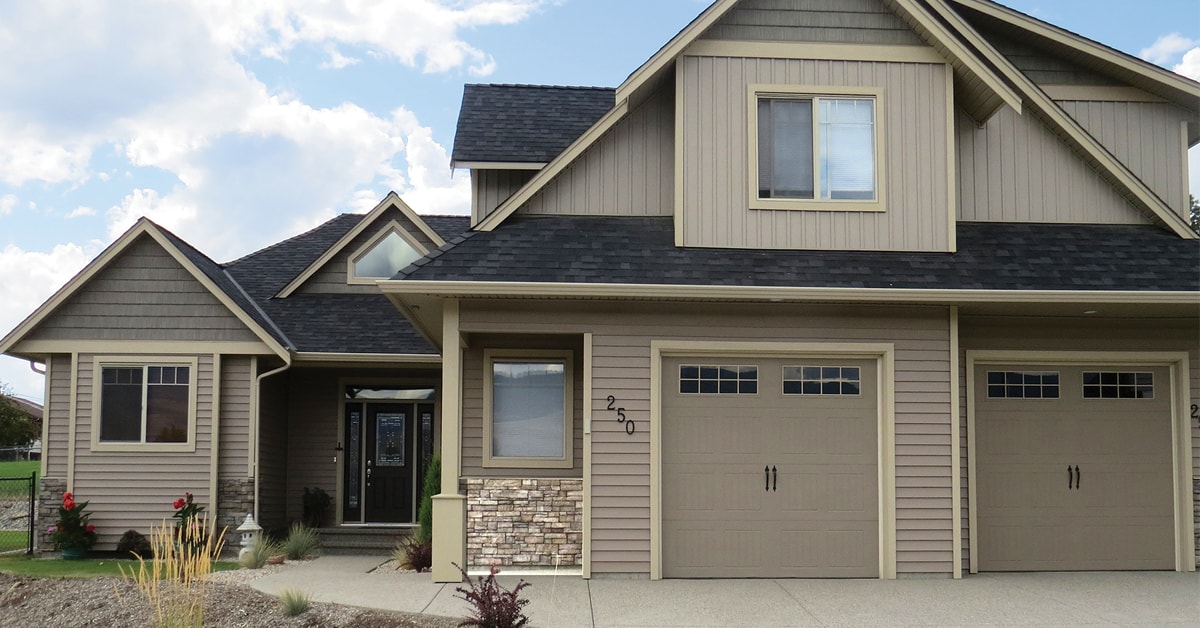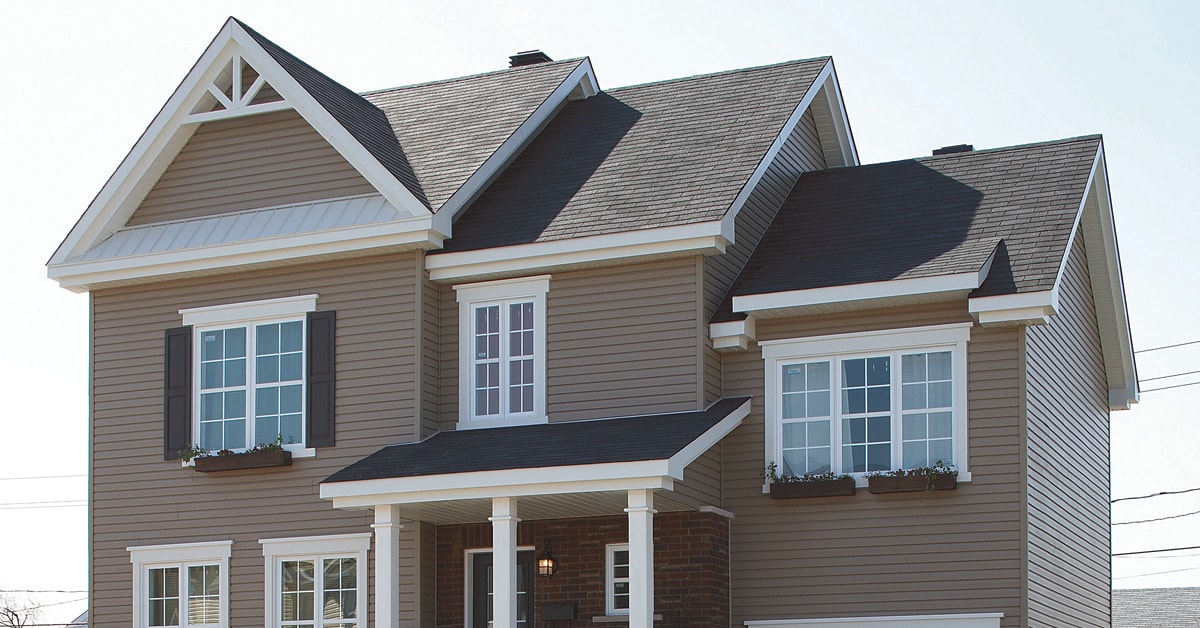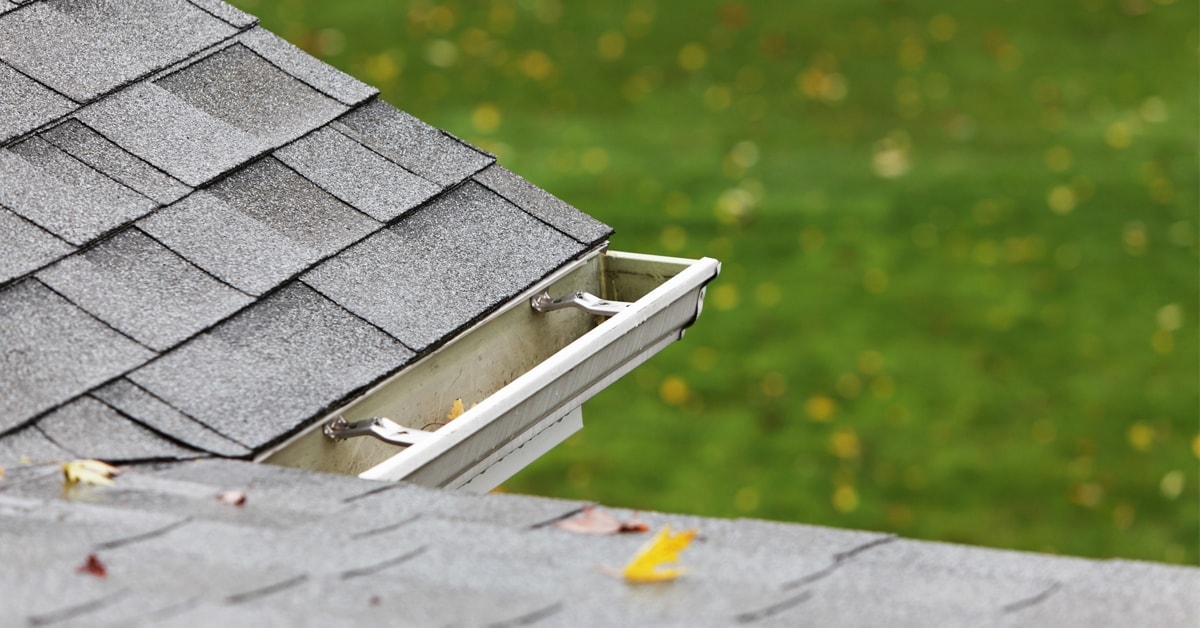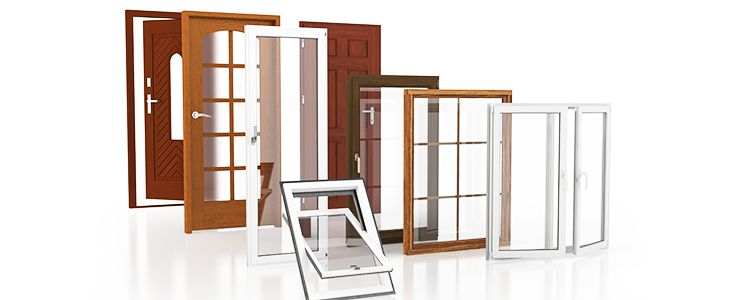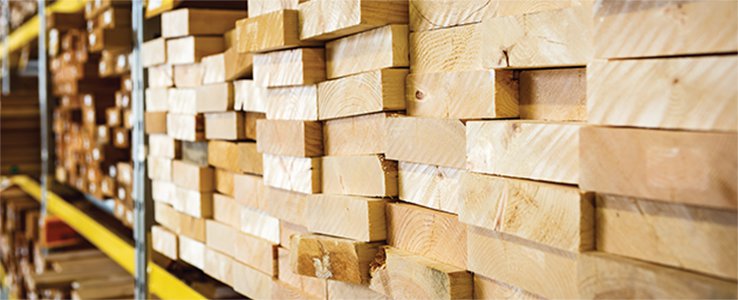Features and components
The cross-section diagram below is a standard type of construction in Canada. Even though new materials available may affect the composition of the wall, the layout and sequence of layers would be similar to installing exterior vinyl siding on walls.
Exterior wall cladding
Siding is the exterior finish made of all types of materials - excluding masonry. Among the most popular are vinyl and aluminum siding, wood, wood fibre and fibre cement. Depending on the product and style desired, they can be installed vertically, horizontally or even at an angle.
Masonry
Masonry includes natural stone, clay or concrete bricks, and all other earth-based materials, such as parging, used as an exterior wall finish for buildings.









